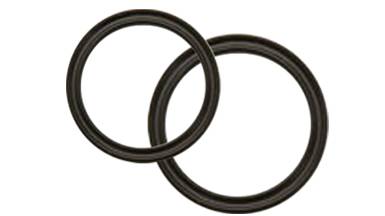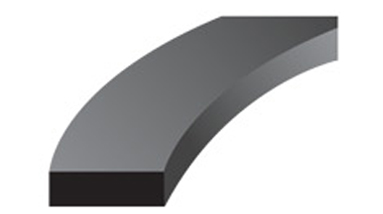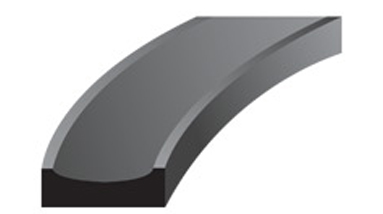
Back-Up Rings
One of the most common types of failure for O-Rings is extrusion. It occurs when an appliction's systemic pressure is too great, causing the O-Ring to frequently extrude into the clearance gap between mating parts. Often, this extrudate is nibbled away causing a loss of material and seal failure quickly follows.
Three options are available to prevent extrusion failure: 1.) Tighten the clearances, reducing the extrusion gap. This may be a costly option; 2.) A less expensive option is increasing the hardness of the O-Ring. A higher durometer O-Ring offers superior extrusion resistance, however, it is often an unfeasible solution because of material availability. Also, harder durometer materials are limited in low pressure sealability; 3.) The best option is adding a back-up ring that's constructed with a hard, extrusion resistant material, for example a high durometer nitrile, nylon, Hytrel®, or PTFE. Back-up rings fit between the O-Ring and the extrusion gap, which minimizes the potential for extrusion failure.
While back-up rings are employed in conjunction with O-Rings in both dynamic and static sealing applications, the gland that they fit into has to be designed to accomodate both the O-Ring and the back-up. For additional information on gland design please visit High Performance Seal's static or dynamic gland design guides.




